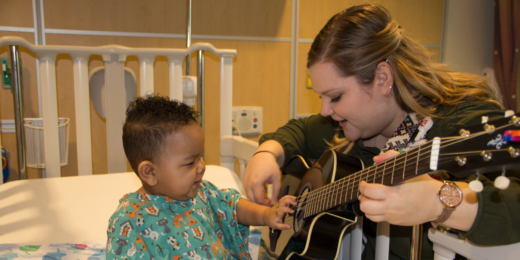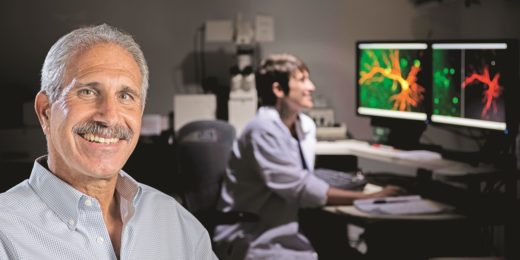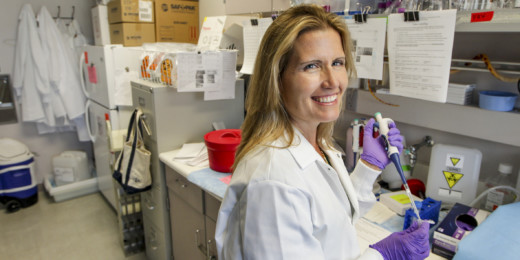A new program at Lucile Packard Children's Hospital Stanford helps young patients express their emotions with songs and musical instruments.
Month: April 2018
Being a neuroscientist: A conversation with veteran Stanford brain researcher Rob Malenka
In an interview in the journal Neuron, Stanford's Rob Malenka holds forth on a wide range of subjects stretching from reflections on his own career trajectory to his approach to boosting those of his trainees to the future of neuroscience itself.
Countdown to Childx: Medical device innovation for kids with chronic disease
Pediatric cardiologist and biomedical innovator Bronwyn Harris talks about the challenge of translating data into better outcomes for kids with chronic diseases.
Keeping fit fights off genetic risk for heart disease, Stanford study finds
In one of the largest observational studies on fitness and heart disease, researchers examined found that people with higher levels of grip strength, physical activity and cardiorespiratory fitness had reduced risks of heart attacks and stroke.
Spinal health and back pain: Straightening out facts from fictions
What can be done to treat and prevent back pain? And how does our mental/emotional health affect our spinal health? Esther Gokhale, a spinal health educator and author, weighs in.
Telomerase key to liver regeneration, Stanford researchers find
Liver cells expressing high levels of telomerase – a protein normally associated with resistance to aging and implicated in cancers and stem cell maintenance – are necessary to regenerate the organ after normal cell turnover or in response to damage.
Improving patient safety with bedside computer vision
Can computers carry out hospital safety-monitoring tasks better than humans? A Stanford research team has been testing the idea; so far, it's working well.
Despite policies, tobacco products marketed on Facebook, Stanford researchers find
Facebook prohibits paid tobacco advertising, but Stanford researchers found brands and vendors marketing their products through unpaid content, in apparent conflict with the rules or their spirit.
Stanford researcher making strides toward understanding autism
Inspired by family members to pursue a science career, Stanford's Karen Parker is working to better understand the biological basis of social functioning as related to autism.
Stars of Stanford Medicine: Expanding access to science education
This Stars of Stanford Medicine Q&A features Cooper Galvin, a graduate student in biophysics, who is working to make science accessible to all.
It’s when, not if, computers come for medicine
Future physicians may one day be practicing more as overseers rather than decision makers, argues Stanford medical student Steven Zhang.
New toolkit aims to prevent dangerous blood clots in pregnancy
The Stanford-based California Maternal Quality Care Collaborative has released a new toolkit to help doctors prevent dangerous blood clots in pregnant women and new mothers.
Oncologists disagree on use of value to guide cancer treatments
A new study found that oncologists have divergent views on how to use “value” to guide cancer treatment recommendations.
Stanford and Common Sense Media explore effects of virtual reality on kids
How are kids using virtual reality? What's the effect of VR on their brains? A new report delves into these questions and provides parents and educators with a practical guide on VR use.
Stress hormone rise at night leads to weight gain
Immature fat cells grow up if stress hormones rise at night. A new study explains the molecular underpinnings of why people gain weight due to chronic stress, disrupted circadian rhythms and treatment with glucocorticoid drugs.
Probing concussion’s complexities with football mouthguards and a whole lot of computer time
Concussion is a serious public health problem, but researchers don't fully understand how they happen or how to prevent them. Now, researchers find, concussion is more complex than previously thought.

















